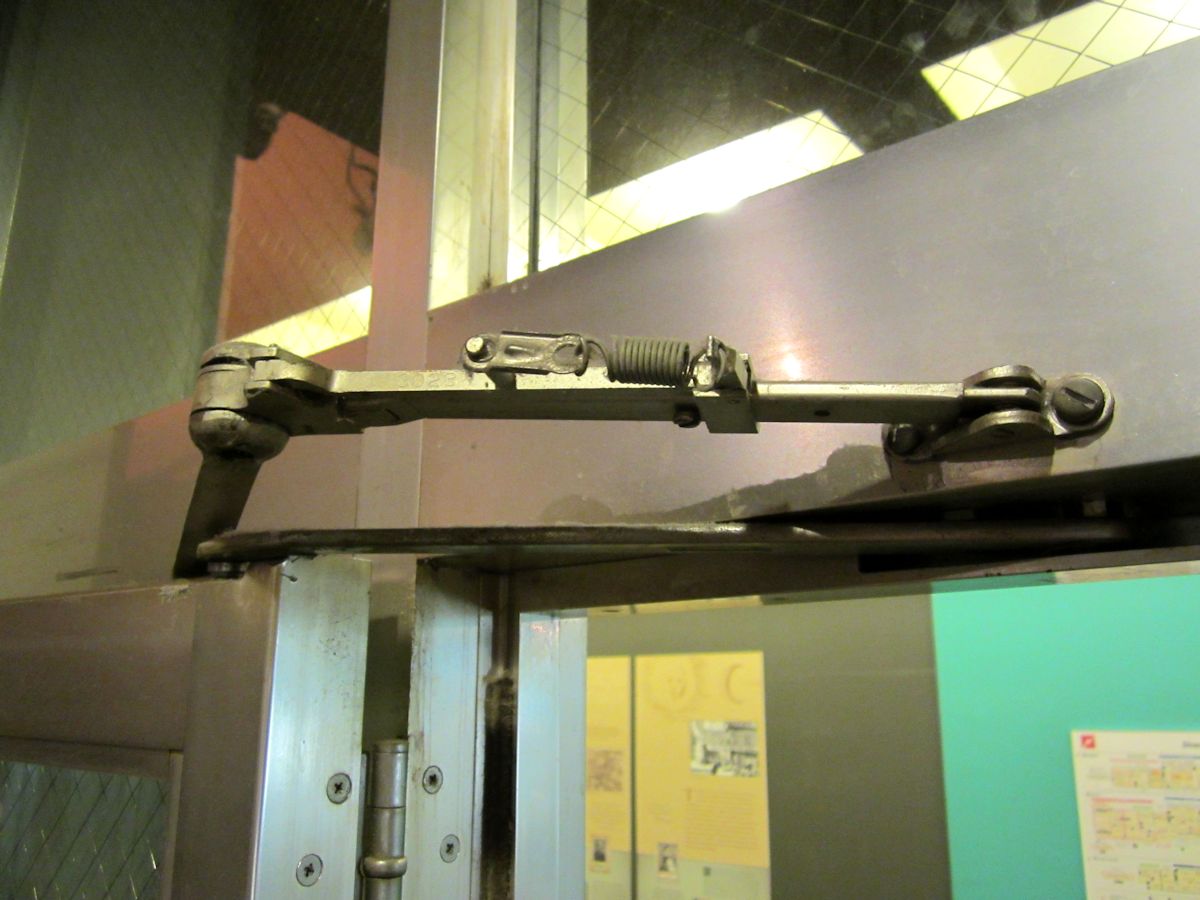 When I was teaching my online Decoded class for DHI last week, I discussed fusible link closer arms which were one of the original hold-open devices. NFPA 80 does not prohibit their use but the International Building Code (IBC) requires automatic-closing doors in certain locations to be smoke-activated…automatic-closing by the actuation of smoke detectors or by loss of power to the smoke detector or hold-open device. This would rule out fusible link arms for these locations, because fusible links are activated by heat, not smoke.
When I was teaching my online Decoded class for DHI last week, I discussed fusible link closer arms which were one of the original hold-open devices. NFPA 80 does not prohibit their use but the International Building Code (IBC) requires automatic-closing doors in certain locations to be smoke-activated…automatic-closing by the actuation of smoke detectors or by loss of power to the smoke detector or hold-open device. This would rule out fusible link arms for these locations, because fusible links are activated by heat, not smoke.
Someone in the class asked where it would be acceptable to use a fusible link arm. I wrote an article about hold-opens a while ago, but I’ve posted a more detailed list of locations requiring smoke-activation below.
My question for you is…what fire door locations can you think of that are not on this list, where the door would not be required to be smoke-activated and could have a fusible link arm?
According to the 2015 edition of the IBC, automatic-closing doors in these locations must be smoke-activated:
- Cross-corridor doors.
- Exit enclosure stairway/ramp doors.
- Fire door assemblies protecting openings in exits or corridors.
- Doors in walls required to be capable of resisting the passage of smoke for incidental use areas (listed in Table 509 of the 2015 IBC – includes rooms like furnace and boiler rooms, some large storage rooms, laundry rooms, maintenance shops, and others).
- Smoke barrier doors in Group I-2 and Ambulatory Care facilities.
- Doors in a fire partition.
- Doors in a fire wall.
- Doors in a shaft enclosure.
- Doors in waste and linen chutes and access/discharge rooms.
- Doors in compartmentation walls of underground buildings.
- Doors in elevator lobby walls of underground buildings.
- Doors in smoke partitions where specified in the IBC (elevator lobby smoke partition doors).
.
So…where can a fusible link arm be used?
You need to login or register to bookmark/favorite this content.






the life safety code handbook (under the 7.2.1.8 explanatory note) defines fusible link arms as not acceptable at rated doors as I read it.
Lori: How do fusible link closer arms get past 4.7 Placement of Detectors in NFPA 80 2007? 4.7.1: All detectors, including fusible links, shall be placed as show in Figure 4.7.1(b), but in no event shall detectors be placed in the dead air space …” Basically want the fusible link to be between 4″ and 12″ from the corner of wall to ceiling. Plus 4.7.5: “…both sides of the wall…”, and 4.7.5.1: Basically links on both sides of the wall near the ceiling. I know we use these placements for fire rated rolling doors, but I don’t see in Chapter 4 where it calls out these placements for only rolling products. Chapter 4 being titled “General Requirements”, I thought it dealt with general rules for all fire doors unless otherwise called out to be door specific. The real intent for a fusible link (IMO), is to sense (heat) activity on either side of the opening, because you don’t know which side of the opening the fire will start. Same with smoke detectors.
Thoughts? Oh, and Merry Christmas!
In the Door and Hardware Museum?
I think there is a use for them Vincent. From a lot of people on this site plus other hardware people tell me the reason fusible links have a bad rep is that they were not placed at the right height and not set at the right temperature. We created a hinge with a fusible link that can be used on interior doors and is set to go off at 157 degrees which would save occupants as well as firefighters. I am a retired FDNY member and any time you can compartmentalize a fire it’s a great thing. Ceasefire Door Hinge check it out let me know what you think.
In historical federal buildings.
The only application in 35 plus years where I have been able to leave a fusible link in place was a 100 year old church that had a gravity roll down fire partition across the hallway in a space that was between two sections of the building. The wall was an original outside wall that ended up being opened up during a major addition. All of the old closers in the building stairwells had fusible links that had to be removed and upgraded to magnetic hold opens. The roll down curtain had a weighted arm that was held by a fusible link and that curtain came down fast. The AHJ allowed the link to stay in place because the curtain would cause serious injury if it came down on someone during a fire system glitch or alarm. He agreed that false alarms and tests releasing the curtain would be hazardous but we were required to test the curtain operation annually. He would not allow the removal of the curtain even though later renovations had included fire doors in the hallways at other locations. I was a member of that church at that time and we always hoped that it would be overlooked for a long time into the future. The curtain and additions are all over 50 years old and would very difficult to bring up to current code.